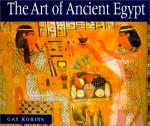|
This section contains 664 words (approx. 3 pages at 300 words per page) |

|
Sources of Knowledge. Cosmetics and perfumes were included with the burials of both men and women in ancient Egypt. Additional knowledge of the use of cosmetics can be deduced from funerary paintings and relief sculpture.
Hygiene. Cleanliness was the most important component of ritual purity for Egyptians and was also considered significant in daily life. Upper-class homes were equipped with areas containing an early variant on the shower stall— a slab of stone with a drain provided a platform where people knelt as a servant poured water from a bucket.
Soap. The ancient Egyptian equivalent of soap was a body scrub made from salt, natron, and honey. In the Edwin Smith Surgical Papyrus (circa 1630-1539 B.C.E.), the author suggests that calcite granules also were added to the body scrub. A skin cleanser found in a tomb of...
|
This section contains 664 words (approx. 3 pages at 300 words per page) |

|




